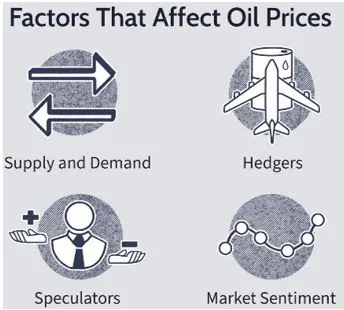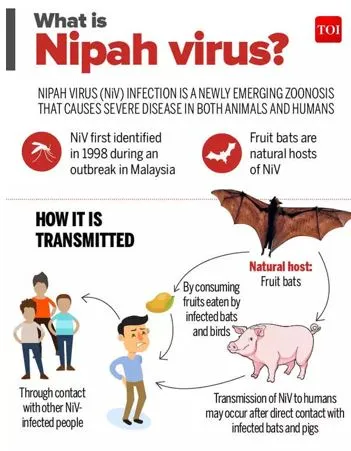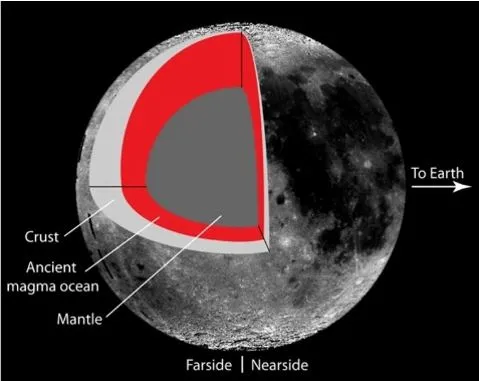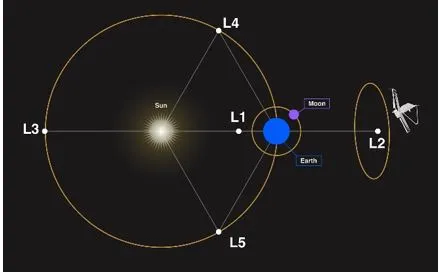

3rd June 2024 (12 Topics)
Mains Issues
Context
The Centre for Energy, Environment and People (CEEP) organized a dialogue called 'Vidyut Samvad' to discuss the systemic issues of poor electricity supply faced by farmers in Rajasthan. The panel suggested establishing a farmers’ cooperative-based distribution model under the Electricity Act, 2003, to address regulatory accountability and improve electricity supply. The role of solar and energy-efficient pumps for irrigation was also emphasized as a potential solution.
Issues faced by Farmers
- The farmers suffers from the inadequate electricity supply, with only four hours of power against the mandated six hours, causing voltage fluctuations that damage irrigation motors and transformers.
- This results in crop losses and increased farming costs, posing a significant concern for farmers.
Significance of farmers’ cooperative-based distribution model
- A farmers’ cooperative-based distribution model involves organizing farmers into cooperatives to collectively manage and distribute electricity in rural areas.
- In this model, farmers work together to address their common energy needs, such as irrigation and powering agricultural equipment, by establishing their own electricity distribution system.
- Overall, the farmers’ cooperative-based distribution model empowers rural communities to take control of their energy resources, improve access to electricity, and address the specific challenges they face in agricultural production.
- It also promotes local economic development and resilience.
Fact Box:The Electricity Act, 2003
Current State of Power Sector
Overview of India's Electricity Sector:
Government Schemes for Power Sector:
|
PYQQ. Which one of the following is a purpose of ‘UDAY’, a scheme of the Government? (2016)
Solution: (d) |


Mains Issues
Context
In a landmark development, the 77th World Health Assembly recently approved a series of amendments to the International Health Regulations (IHR 2005), responding to lessons learned from the Covid-19 pandemic. These amendments aim to enhance countries' readiness to tackle Public Health Emergencies of International Concern (PHEIC) and Pandemic Emergencies (PE).
The Amendments:
- Need: The amendments were prompted by the challenges faced during the Covid-19 pandemic, highlighting the need for a more robust global health security framework.
- The amendments focus on improving countries' preparedness and response capabilities during health emergencies.
- They include provisions for
- equitable access to health products during emergencies
- mobilization of financial resources to support developing countries in strengthening their core capacities under the IHR (2005)
- Significance:
- The adoption of these amendments marks a significant step towards enhancing global health security and promoting equity in pandemic response efforts.
- India played a constructive role in the negotiations, contributing to the crafting of an instrument that prioritizes equity and enables developing countries to respond effectively to health emergencies.
What is Global Health Security?
- Global health security focuses on preventing, detecting, and responding to infectious disease threats that can easily spread across borders.
- Major Risks: Globalization and advancements in medicine have introduced new risks to health security:
- Emergence and Spread of Infectious Diseases: Diseases like the novel coronavirus identified in 2019 can quickly spread across continents.
- Globalization of Trade and Travel: Faster trade and travel allow diseases to spread more rapidly.
- Rise of Drug-Resistant Pathogens: Antibiotic-resistant bacteria, such as E. coli, pose a significant threat.
- Risk of Pathogen Release: There's a risk of intentional or accidental release of dangerous pathogens.
- Role of IHR: IHR play a crucial role in global health security by providing a framework for countries to prevent, detect, and respond to international health threats. They promote collaboration and information sharing among countries, strengthening the global response to infectious diseases and other health emergencies.
Is India's Healthcare Ready for Future Pandemics?
- Current Status: India's Global Health Security Index score dropped from 43.6 in 2019 to 42.8 in 2021, lower than some other countries like Japan, Brazil, and Russia. However, India is actively taking steps to improve its readiness.
- Initiatives Taken:
- PRET Initiative: India launched the Preparedness and Resilience for Emerging Threats (PRET) initiative to develop a National Pandemic Preparedness Plan for Respiratory Viruses, offering guidance for integrated planning.
- One Health Approach: One Health is an interdisciplinary approach recognizing the link between human, animal, and environmental health. India is implementing One Health through various initiatives:
- Pradhan Mantri Ayushman Bharat Health Infrastructure Mission (PM-ABHIM)
- National Institute for One Health
- Establishment of a network for genomic surveillance
- Ayushman Bharat Digital Health Mission
Fact Box: About International Health Regulations (IHR)
|
Related PYQQ: Critically examine the role of WHO in providing global health security during the Covid-19 pandemic. (2020) |


Mains Issues
Context
The recent debate on inequality has gained attention after contrasting views on inequality’s advantages and disadvantages. Researchers have highlighted that modern India exhibits greater inequality than in colonial times. While some argue that inequality incentivizes entrepreneurship, others contend that excessive inequality can harm economic growth and welfare, advocating for wealth redistribution measures.
Impact of Inequality:
- Direct impacts: Decreased economic growth, increased poverty levels, and greater social unrest.
- Inequality can undermine democratic processes, posing challenges to social cohesion and economic stability.
- Monopoly Power and Consumption: Billionaires derive wealth from monopolistic control, allowing them to set higher prices, reducing real wages and consumption power. This leads to lower output and investment, impacting overall economic welfare.
- Sluggish economic expansion: Inequality results in reduced consumption power, weakening multiplier effect of investment. Lesser consumption by those with lower incomes leads to sluggish economic expansion.
The other side of the coin (Positive impacts)
- Employment and welfare: Some argue that a certain level of inequality incentivizes entrepreneurship, which in turn boosts employment and welfare.
- Investment: The prospect of greater financial rewards encourages risk-taking and investment in new ventures.
- Innovation and growth: Entrepreneurial endeavors spurred by income inequality can contribute to economic growth. Innovation leads to the creation of new businesses, technologies, and job opportunities.
- Savings: Higher-income individuals tend to save and invest a larger portion of their income. Increased savings and investment can fuel economic development and prosperity.
- Efficiency and Productivity: Income inequality may foster competition and drive efficiency in the economy. Individuals strive for higher earnings, leading to increased productivity and innovation.
Impact of Redistribution on Growth:
- Redistributive measures may hamper job creation by reducing incentives for wealth accumulation. However, taxing wealth does not necessarily deter investment, as it depends on future profit expectations rather than past wealth accumulation.
- Redistribution can enhance growth by strengthening the multiplier effect and encouraging investment where purchasing power is high.
- Policies like taxing billionaire wealth and providing basic income, as proposed by Thomas Piketty, can foster entrepreneurship and spur economic growth.
Fact Box: Poverty in India
|
PYQQ: Capitalism has guided the world economy to unprecedented prosperity. However, it often encourages shortsightedness and contributes to the wide disparities between the rich and the poor. In this light, would it be correct to believe and adopt capitalism driving inclusive growth in India? Discuss. (2014) |


Prelims Articles
Context
Indian military prowess was on display as the Indian Air Force (IAF) and the Indian Navy joined multinational war games hosted by their U.S. counterparts.
IAF's Participation in Red Flag Exercise:
- Red Flag is a two-week training exercise focused on advanced aerial combat, aiming to integrate aircrew in a multinational environment.
- It simulates realistic and challenging combat scenarios, bringing together aircrew and equipment from different nations and services.
- Objectives: to enhance combat readiness and interoperability among international participants. By replicating realistic combat situations, it creates a comprehensive learning environment for aircrew.
- Locations: Red Flag exercises take place at two main locations:
- Nellis Air Force Base in Nevada: organized by the United States Air Force Warfare Center (USAFWC)
- Eielson Air Force Base in Alaska: managed by the Pacific Air Forces (PACAF).
- Red Flag-Alaska (RF-A): RF-A is a series of field training exercises directed by the Pacific Air Forces commander. It involves U.S. and partner nation forces, focusing on enhancing their combat capabilities in the Pacific region.
Indian Navy's Participation in RIMPAC Exercise:
- Began in: 1971
- RIMPAC is the world's largest international maritime warfare exercise.It is a biennial international military exercise hosted by the Commander of the United States Pacific Fleet.
- RIMPAC 2024 marks the 29th installment of this renowned international maritime exercise.
- Key Features: RIMPAC combines force capabilities within a dynamic maritime setting, showcasing enduring interoperability across a wide range of military operations.
- Theme for RIMPAC 2024: "Partners: Integrated and Prepared"
- The Indian Navy deployed the indigenous stealth frigate INS Shivalik for Ex RIMPAC (Rim of the Pacific), scheduled in Hawaii from June 25 to August 2.
- The INS Shivalik, on a mission in the South China Sea and Pacific Ocean, departed to participate in the Japan-India maritime exercise JIMEX-24 before heading to RIMPAC-24.
- This deployment aims to enhance interoperability with the Japan Maritime Self-Defense Force (JMSDF), S. Navy, and other partner navies.


Prelims Articles
Context
OPEC+ extended deep oil output cuts until 2025 due to tepid demand growth and rising U.S. production. Current cuts of 3.66 million bpd were extended until end of 2025. Additional cuts of 2.2 million bpd extended until September 2024. These cuts will be gradually phased out from October 2024 to September 2025.
What are OPEC and OPEC+?
- OPEC Formation: Established in 1960 by Iraq, Iran, Kuwait, Saudi Arabia, and Venezuela, OPEC aimed to coordinate petroleum policies and stabilize prices.
- Membership: Currently comprises 12 countries, primarily from the Middle East and Africa, collectively representing about 30% of global oil production.
- OPEC Current Members: Saudi Arabia, United Arab Emirates, Kuwait, Iraq, Iran, Algeria, Libya, Nigeria, Congo, Equatorial Guinea, Gabon, and Venezuela.
- OPEC+ Partners: Russia, Azerbaijan, Kazakhstan, Bahrain, Brunei, Malaysia, Mexico, Oman, South Sudan, and Sudan.
- OPEC+: Formed at the end of 2016, OPEC+ is a coalition including 10 non-OPEC oil exporters like Russia.
- Objective: Together, OPEC and OPEC+ aim to regulate global oil supply, accounting for approximately 41% of global oil production.
Influence on Global Oil Prices:
- Market Share: OPEC member states' exports make up nearly 49% of global crude exports. They also possess approximately 80% of the world's proven oil reserves.
- Decision Making: Regular meetings determine the amount of oil to sell on global markets. Adjusting supply in response to demand fluctuations impacts global oil prices.
Fact Box: Working of Crude Oil Market
|


Prelims Articles
Context
Scientists at the Institute of Advanced Virology (IAV) developed a safe and effective way to generate non-infectious Nipah virus-like particles (VLPs) in the laboratory.
Key-highlights of the research:
- This breakthrough provides a safer platform for research and development of treatments against the deadly Nipah virus (NiV) in a BSL-2 laboratory.
- It brings researchers closer to developing monoclonal antibodies and antivirals against NiV and similar pathogens.
- Characteristics of VLPs:
- VLPs closely resemble viruses but are non-infectious as they contain no viral genetic material.
- They carry most of the virus's characteristics, making them valuable tools for studying viral binding, entry kinetics, and immune responses.
- HiBiT-Tagged NiV-VLPs:
- Scientists created "HiBiT-tagged" Nipah virus-like particles (NiV-VLPs) using plasmid-based expression systems.
- These VLPs are identical to the native virus but cannot replicate.
- The inclusion of a highly sensitive HiBiT tag accelerates their potential in antiviral drug screening and vaccine development.
- HiBiT-tagged VLPs offer reduced risks compared to using native viruses in research assays.
- This method is applicable to other virulent pathogens and is advantageous for studying BSL-3/BSL-4 level viruses in lower bio-containment levels.
Fact Box: About Nipah Virus
|


Prelims Articles
Context
In a monumental feat for space exploration, China's Chang'e-6 spacecraft has successfully landed on the far side of the Moon, marking the first-ever attempt to collect samples from this uncharted territory.
Key Highlights:
- Mission Objective: Chang'e-6's primary mission is to collect and return samples from the Moon's far side, a pioneering endeavor in space exploration.
- Landing Site: The chosen landing area within the South Pole-Aitken Basin, specifically the Apollo Basin, was selected based on its potential for scientific exploration and favorable landing conditions, including flat terrain and communication suitability.
- Technological Advancements: Chang'e-6's lander is equipped with advanced sensors, including microwave, laser, and optical imaging sensors, enabling precise measurements and obstacle detection on the lunar surface. To ensure a smooth landing, gamma-ray sensors are employed to accurately measure height despite lunar dust interference.
- Sampling Process: The probe is set to complete sampling within two days, utilizing both drilling for subsurface samples and a robotic arm for surface sample collection. Despite challenges, including limited communication windows due to the Moon's obstruction, the mission aims for efficient sample retrieval within a reduced timeframe.
- International Collaboration: The mission incorporates scientific instruments from France, Italy, the European Space Agency/Sweden, and notably, a payload from Pakistan, marking the first inclusion of a Pakistani orbiter in a Chinese lunar mission.
Fact Box: Far Side of the Moon
Indian Achievement:
|
PYQAssertion (A): The same face of the moon is always presented to the earth. [2005] Reason (R): The moon rotates about its own axis in 23 and half days which is about the same time that it takes to orbit the earth.
Solution: (c) |


Prelims Articles
Context
NASA's James Webb Space Telescope (JWST) has uncovered a remarkable find - the earliest-known galaxy, challenging previous assumptions about the universe's infancy. This galaxy, named JADES-GS-z14-0, was observed approximately 290 million years after the Big Bang, during a period known as cosmic dawn.
Key Findings:
- JADES-GS-z14-0 measures about 1,700 light years across and possesses a mass equivalent to 500 million stars like sun.
- Despite its early formation, it was rapidly generating stars, approximately 20 per year.
- Surprising Brightness: The brightness and size of this early galaxy defy previous expectations. Scientists were astonished by its luminosity, as it was larger and brighter than anticipated for a galaxy at this early stage.
- Comparison: While notable for its time, JADES-GS-z14-0 is dwarfed by present-day galaxies like Milky Way, which spans about 100,000 light years and contains the mass of around 10 billion sun-sized stars.
- Second Discovery: In addition to JADES-GS-z14-0, the JWST also identified the second oldest-known galaxy, JADES-GS-z14-1, dating back approximately 303 million years post-Big Bang. This galaxy, although smaller, still exhibited significant star formation.
- Implications: These discoveries challenge existing theories about early galaxy formation. They hint at a denser, more gas-rich environment in the early universe, with star formation processes differing markedly from those seen today.
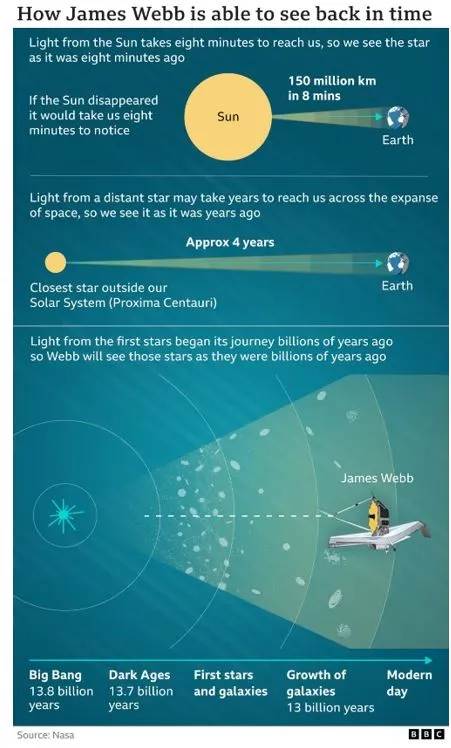
Fact Box: About James Webb Space Telescope (JWST)
L2 Point Explanation:
|


Prelims Articles
|
S.No. |
Term |
About |
|
1. |
Big Bang Theory |
The Big Bang Theory is the leading idea about how the universe began. It suggests that everything started from a super hot and dense point, which then expanded rapidly over 13.7 billion years to create the universe we see today, which is still getting bigger. |
|
2. |
Economic inequality |
It refers to the disparities in income and wealth among individuals in a society. |
|
3. |
Lagrange points |
Lagrange points are positions in space where objects sent there tend to stay put. At Lagrange points, the gravitational pull of two large masses precisely equals the centripetal force required for a small object to move with them. These points in space can be used by spacecraft to reduce fuel consumption needed to remain in position. |
|
4. |
Public Health Emergencies of International Concern (PHEIC)
|
PHEIC is a formal designation by the World Health Organization (WHO) to signify an extraordinary public health event with international implications. It indicates that a situation is serious, sudden, unusual, or unexpected, with potential to endanger global health security. |


Editorials
Context
The bifurcation of Andhra Pradesh into two states, Andhra Pradesh and Telangana, in 2014 provides a significant case study on the political, economic, and historical implications of state reorganization based on linguistic and regional lines. Ten years on, it is essential to examine how this division has affected the Telugu people and the broader Indian Republic.
Concerns of Linguistic Reorganization
- Fraying Unity: The division raises questions about the durability of linguistic unity as a principle for state organization, especially when compared to Kannada and Marathi linguistic bonds.
- Future of Linguistic States: There is speculation about whether other linguistic states might face similar fates, necessitating a reevaluation of linguistic unity as an organizing principle for states.
- Need for New Principles: The bifurcation prompts consideration of alternative principles for state organization, such as economic, political, or historical factors, rather than solely linguistic ones.
Political and Economic Repercussions
- Impact on Political Clout: The bifurcation reduced Andhra Pradesh's Lok Sabha seats from 42 to 25, diminishing its political influence. Telangana, with 17 seats, is now fifth in the regional pecking order.
- Federal Structure Strains: Unequal sizes among states can lead to political and economic imbalances within the federal structure, potentially causing disenchantment and alienation among smaller states.
- Long-term Challenges: Issues arising from the bifurcation, such as the mishandling of the division process and unfulfilled promises, will likely surface, revealing deeper cracks in the federal system.
Challenges and Future Considerations
- Delimitation Concerns: Future delimitation and the resulting shift in representation could exacerbate regional disparities, especially if northern states gain more seats in the central legislature.
- Economic and Political Distribution: The distribution of political power, influenced by the number of seats, impacts the allocation of economic resources, further highlighting the importance of balanced representation.
- Need for Thoughtful Reorganization: The bifurcation of Andhra Pradesh underscores the necessity for careful and considered approaches to state reorganization to avoid long-term issues and ensure stability.
UPSC Mains Questions
Q. Examine the role of linguistic unity as a principle for state organization in India. In light of the Andhra Pradesh bifurcation, should India consider alternative principles for organizing states? Justify your answer with examples.


Editorials
Context
China’s proposal for a no-first-use treaty on nuclear weapons, presented at the United Nations Conference on Disarmament, is a significant development in nuclear security discussions. This proposal has implications for global nuclear strategy and demands serious consideration from the world, including India.
China’s No-First-Use Proposal and Its Implications
- Introduction to the Issue: China’s senior officials dealing with nuclear weapons policy have proposed that nuclear-weapon states should negotiate and conclude a treaty on no-first-use of nuclear weapons against each other.
- Scepticism over China’s Intentions: Despite China’s historical adherence to a no-first-use doctrine, its use of proxies to hold out nuclear threats against strategic adversaries and the expansion of its nuclear arsenal raise questions about its commitment to this doctrine.
- Global No-First-Use Arrangement: A global no-first-use arrangement is seen as a more sensible approach than other existing or proposed arms control frameworks. It is viewed as a step in the right direction, better than the status quo, and not too painful.
Global Nuclear Risks and the Urgency for a No-First-Use Treaty
- Failure of the NPT System: The nuclear non-proliferation treaty (NPT) system is considered a failure, serving only the interests of the five countries that use it to claim they are ‘legitimate’ nuclear powers.
- Urgency Due to Climate Crisis: In the face of the climate crisis, a nuclear exchange could tip the planet into a different climate regime. Even a limited nuclear exchange could cause over 690 million tonnes of carbon dioxide emission, higher than the UK’s annual total at that time.
- Global No-First-Use as a Way Station: Global no-first-use is attractive as it is a way station - better than the status quo, not too painful, and a move in the right direction overall.
India’s Role and the Need for a Broader Coalition
- India’s Interest in a No-First-Use Regime: A global no-first-use regime is in India’s interest, and New Delhi should support the idea. However, Beijing’s reluctance to engage India in international discussions due to its stance that India is not a nuclear power poses a challenge.
- Need for a Broader Coalition: The matter is too serious to be left to the self-serving NPT clique alone. A broader coalition of powers, many of which are part of the G20 but also some that are not, needs to be brought together to create sustained pressure towards this end.
- China’s Role in Bringing Other Countries into the Arrangement: If China invites Indian participation in global no-first-use talks, then the world will know that Beijing’s proposal is genuine. A wise leadership in Beijing will recognize that India and China have common interests on this issue. The onus should be placed on China to bring North Korea and Pakistan into the arrangement.
UPSC Mains Questions
Q. Discuss the limitations of the Nuclear Non-Proliferation Treaty (NPT) in the current geopolitical climate. How could a global no-first-use agreement serve as a more effective framework for nuclear risk reduction?


Editorials
Context
The recent GDP estimates released by the National Statistical Office (NSO) for 2023-24 show an impressive growth rate of 8.2%, surpassing most optimistic estimates and indicating a robust growth story for India. However, despite this positive outlook, the country still has a long way to go in terms of per capita income and poverty alleviation.
Impressive GDP Growth and Its Implications
- Introduction to the Issue: The GDP growth for 2023-24 is at 8.2%, much ahead of the Reserve Bank of India’s estimate of 7% till as late as December 2023. This growth seems to be broad-based, with all sectors except agriculture showing good performance.
- Statistical Perspective: After taking into account the GDP growth in the first three quarters of 2023-24 (8.2%, 8.1% and 8.4% respectively), the NSO’s second advance estimate of 7.6% GDP growth for the year had implied a 5.7% GDP expansion in the January-March quarter. However, the actual figure was a stunning 7.8%, taking the annual figure to 8.2%.
- International Optimism: There is growing international optimism that India is on the cusp of a long-awaited economic take-off, as evidenced by the recent revision in our sovereign-credit outlook from ‘stable’ to ‘positive’ by S&P Global Ratings.
Challenges Ahead Despite GDP Growth
- Per Capita Income: Despite India becoming the world’s fifth-largest economy, when it comes to per capita income, we are close to the bottom of the global league tables, at No. 144. It is only by 2029 that India is forecast to overtake countries like Uzbekistan, Papua New Guinea and Angola in per capita terms.
- Policy Implications: The upcoming government has significant challenges to address, including ensuring sustainable and inclusive growth, enhancing per capita income, and improving the overall quality of life for the population.
UPSC Mains Questions
Q. Critically examine the role of domestic demand and demographic trends in India's recent economic performance. How can India sustain this growth while addressing the disparities in per capita income?


